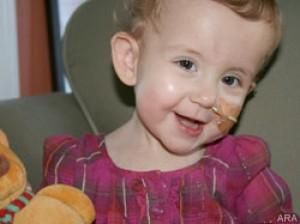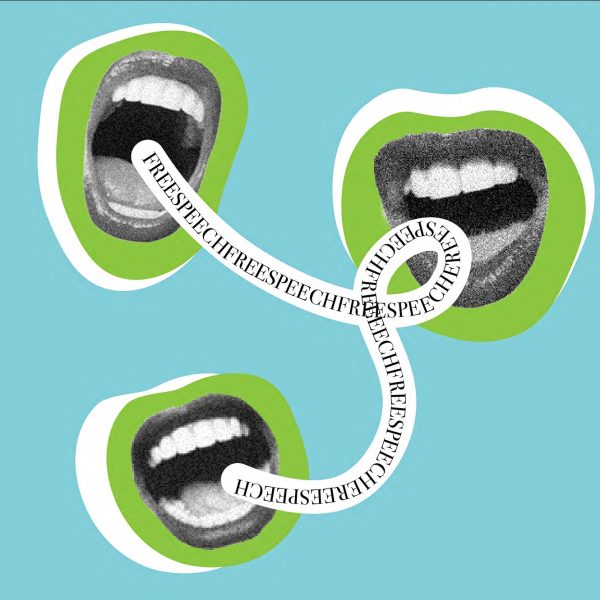No headline provided

March 31, 2011
Jenni Pappas stared at the perinatologist, a specialist inmaternal-fetal health, anxiously watching him perform herultrasound. She was 22 weeks pregnant, and the mass on her baby’schest was so large, it had pushed the heart out of place. Whendoctors explained what it was, Pappas was too stunned to speak. Itwas the baby’s liver. At the time, all she could manage to ask was,”is my baby not going to make it?”
Pappas’ unborn baby girl was diagnosed with congenital diaphragmatic hernia (CDH). Before that day, Pappashad never heard of CDH, and she was not alone. Although CDH is ascommon as spina bifida and cystic fibrosis, affecting one in every2,500 babies, many have never heard of the condition. National CDHAwareness Day on March 31 aims to change that.
The cause of CDH is unknown, and occurs when the diaphragmdoesn’t form properly, leaving a hole in the muscle. The contentsof the abdomen, including the liver, spleen, stomach andintestines, can pass through this opening into the chest,compressing the developing lungs and impeding their growth. CDHbabies suffer multiple complications, and the condition can befatal.
“I knew I could have a stillbirth, I knew she might not surviveright after birth,” says Pappas. “Things were very uncertain.”
As the Pappas’s came to terms with the diagnosis, theirperinatologist in Memphis, Tenn., suggested they contact thespecialists at The Center for Fetal Diagnosis and Treatment at The Children’sHospital of Philadelphia (CHOP). The Pappas family immediately flewto Philadelphia for an evaluation.
Pappas underwent a series of tests, including a level IIultrasound, a fetal MRI and fetal echocardiogram. A comprehensiveteam, including pediatric surgeon Dr. Holly Hedrick, whospecializes in treating babies with CDH, helped them understandtheir tests and explained the important next steps.
“They did a fantastic job of explaining CDH. They told me shewasn’t the worst or the best,” says Pappas. “But I left knowing shehad a ‘chance for survival.’ They were clear that her case did looksevere. I actually appreciated that they didn’t put a percentage onher prognosis. They couldn’t know until after she was born, but Ineeded to know was that she had a chance.”
Children’s Hospital is one of only a few U.S. hospitals offeringsuch comprehensive care for a mother and her fetus before birth.During their initial visit, the Pappas’s met with a team of fetalsurgeons, obstetricians, neonatologists and advance practice nursesto map out a plan for the pregnancy and the baby’s birth.
When Pappas was 31 weeks pregnant, she, her husband and youngdaughter relocated to the Ronald McDonald House in Philadelphia.”There was no question that I would have the baby and the procedureat CHOP,” says Pappas.
On Oct. 29, 2009, Pappas gave birth to her daughter, Cora, inCHOP’s Special Delivery Unit – the world’s very first birthfacility designed exclusively for mothers carrying babies withknown defects. Pappas was able to have a natural delivery with thesupport of CHOP’s midwifery team. Immediately after her birth,Hedrick and her team worked to stabilize Cora. CDH babies requireprompt intubation to help them breathe and must have immediateaccess to specialized ventilation techniques.
“The baby with CDH needs expert multidisciplinary care from thefirst moment,” says Hedrick. “It’s one of the most challengingdiagnoses we handle.” CDH babies are extremely delicate and theircondition can change quickly and unexpectedly.
Cora stayed in the neonatal intensive care unit at Children’sHospital for two months. She defied the odds with her breathing andcame off the ventilators well, but there were many issues with herfeeding and digestion. When Cora was released, she still needed hernasogastric tube in place for feedings. Cora struggled with refluxand swallowing issues throughout her first year of life, and whenCora was a year old, she underwent the procedure for a gastrictube.
Today, Cora is a beautiful and feisty toddler who, in additionto having an extensive vocabulary for her age, has lungs thatfunction as well as a baby born without CDH.
“That blew my mind,” says Pappas. “We have no regrets. Wecouldn’t be happier about the outcome.”




















Leave a Comment